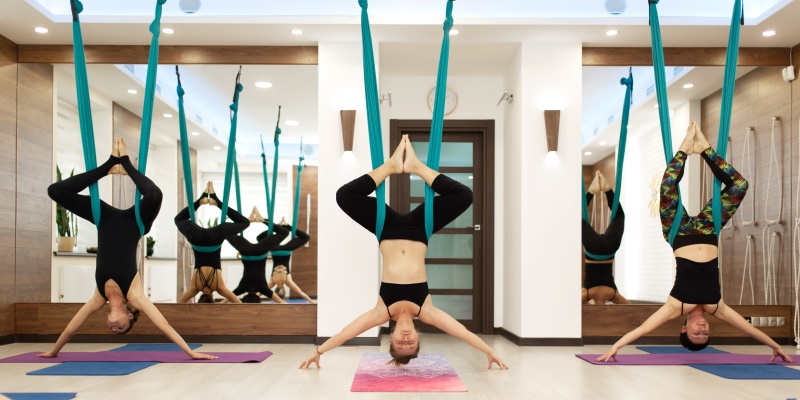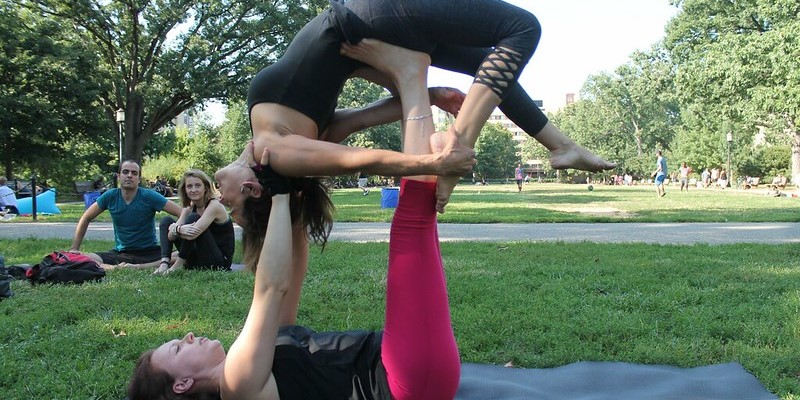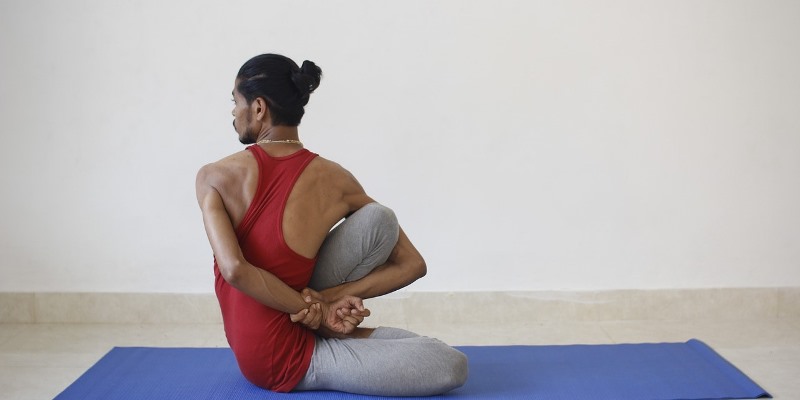
Aerial Yoga is a practice that uses a low-hanging hammock (also known as a Yoga swing or aerial hammock) to support the weight of the body while doing traditional Asanas (Yoga poses), Pilates, dance and/or gymnastic movements, depending on the type of Aerial Yoga chosen.

As Aerial Yoga is a kind of “umbrella” term, there are many different modalities and branches derived from its main idea, many just used as synonyms and others with small variations, such as Flying Yoga, Yoga Trapeze, AntiGravity® Yoga and Swing Yoga, to give some examples.
Some styles focus more on the physical side, adding also gymnastic and acrobatic exercises, while others focus mainly on actual Asanas and also the spiritual side. There can be differences in types of Yoga swings used and the speed of the class and movements, but the common denominator of “doing Yoga movements with an aerial hammock” remains pretty much the same.
It is difficult to understand exactly who invented the Aerial Yoga modality. The answer is complex, but the popular Yoga instructor B.K.S Iyengar (1918 – 2014) is said to have long made use of slings to push Yoga positions further and show his students the benefits of suspended inversions. The slings he used were rudimentary, mostly ropes hanging from the ceiling/on the wall, but the main idea for what we now call Aerial Yoga can be found there.

The invention of the modern Yoga swing is credited to a physical therapist in the US, Antonio ‘Tone’ Cardenas in 2001, but nowadays you can find a great variety of Yoga swings and aerial hammocks, as well as all kinds of accessories that can be used while doing Aerial Yoga.
From then on, many branches/styles of Aerial Yoga were invented, such as Unnata® Aerial Yoga developed by Michelle Dortignac in 2006; Aerial Yoga London, founded by Richard Holroyd in 2011; AntiGravity® Yoga founded by former gymnast Christopher Harrison in 2007; just to name the most known examples.
The important thing to understand is that the main idea behind the use of these suspended hammocks in Aerial Yoga is that it allows spinal decompression, and also the improvement of flexibility, and health of muscles and joints. It’s thought that the constant suspension and swinging makes the body engage more muscles than it would by just doing Yoga positions on a mat.
Some of the health benefits of practicing Aerial Yoga are thought to be: strengthening of the muscles; improvement of blood circulation and digestion; increase of flexibility; improvement of overall posture and core strength; relief of back pains and discomforts; and feeling relaxed and in a peaceful state of mind.
















